Matador Network's Blog, page 871
April 28, 2020
Virtual Cinco de Mayo Happy Hour
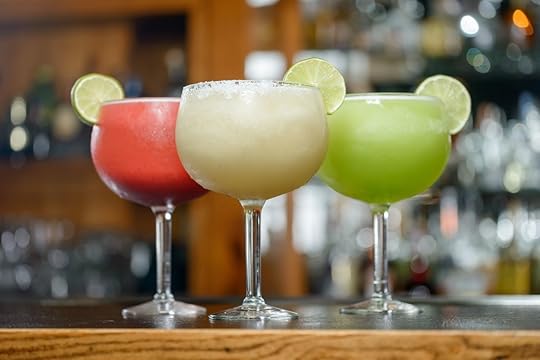
Though it may well have been St. Patrick’s Day the last time you left your house, believe it or not, Cinco de Mayo is literally only a week away. Time flies when you never get dressed. And even though it’s highly unlikely any of us will be slamming tequila shots with strangers to commemorate the Battle of Puebla, the birthplace of the frozen margarita machine wants us all to celebrate anyway.
On Tuesday, May 5, Visit Dallas will be throwing, to our knowledge, the biggest Cinco de Mayo party in the world on its YouTube channel, dubbed the United States’ Official Cinco de Mayo Happy Hour. The event will run from 5:00 to 7:00 PM Central Time. Yes, they realize that’s 3:00 PM on the West Coast. They also realize time has been a pretty relative concept for the past six weeks.
Two chefs from the city’s vaunted Margarita Mile will host the happy hour: Dean Fearing of Fearing’s and Julian Rodarte of Beto & Son. During the event, you’ll learn all about the history of the margarita, the history of Cinco me Mayo, and maybe pick up a few mixology tips along the way.
Though the margarita has been around a long time, it wasn’t until 1971 that Dallas restaurateur Mariano Martinez — likely tired of his bartenders lying about the blender being broken every time someone ordered a frozen margarita — invented the frozen margarita machine. Since then, the machine has revolutionized how we drink margaritas, turning this once rocks-based drink into a slushy, poolside favorite.
Leaning into its sweet, tart, boozy history, Dallas launched the Margarita Mile app-based tour in 2018, encouraging guests to travel the city sampling creative margs from different landmark restaurants, visiting its diverse neighborhoods along the way.
Though you can’t really take Big D up on the offer right now, the hope is this Cinco party whets your appetite for when travel to Texas is a thing again.
“America’s Official Cinco de Mayo Happy Hour is our way of spreading margarita cheer from Dallas,” Visit Dallas Chief Marketing Officer Frank Librio said via a press release.
So fire up your frozen margarita machines, or just pick up a shaker next time you go to the grocery store. Cinco de Mayo isn’t completely canceled this year, and though you may be celebrating with a much smaller crowd than usual, at least all your tequila-based bad decisions won’t go much further than your front door. 

More like this: 5 essential stops on the Margarita Mile in Dallas
The post Dallas is throwing a virtual Cinco de Mayo party for all of the United States appeared first on Matador Network.
2020 set to be hottest year recorded

Because of the coronavirus pandemic, hundreds of thousands of flights have been canceled around the globe, and the rush-hour traffic that typically snarls urban areas has disappeared. As a result, cities around the world have seen massive drops in air pollution, sometimes accompanied by the presence of wild animals in places they haven’t been seen recently.
While no one wants to celebrate a pandemic, environmental groups and forward thinkers have noted one big silver lining in this strange time — people around the globe may finally realize the lasting effect we have on the natural environment.
Not to rain on the 2020 parade — it’s already rather soaked — but this change isn’t happening overnight. According to a report in The Guardian, 2020 is on track to be the hottest year on record, surpassing the “instrumental temperature record” set in 2016. Despite a temporary reduction in carbon emissions, the concentration of CO2 in our atmosphere continues to rise as a result of under-mitigated, long-term pollution.
“We are very unlikely to be able to notice any slowdown in the built-up of atmospheric GHG levels,” said Karsten Haustein, a climate scientist at the University of Oxford, to The Guardian. But we have the unique chance now to reconsider our choices and use the corona crisis as a catalyst for more sustainable means of transport and energy production (via incentives, taxes, carbon prices etc).”
The website globalclimateindex.org, which tracks carbon emissions and their atmospheric impact, has our total estimated carbon emissions at 2.33 trillion tons and rising by the second. The only scientific way to combat these emissions is to reduce humankind’s output while simultaneously removing carbon from the atmosphere.
Our weekly environmental column, The Climate Win, recently looked at a viable way each person can remove their carbon. It’s definitely a start, but as an individual, your best course of action is still to work to reduce, reuse, and recycle in your daily life and to support continued scientific and technological advancement in major polluting industries like transportation and agriculture. 

More like this: NASA releases 50-year timelapse of the earth and moon for Earth Day
The post Despite the drop in air pollution, 2020 is still on track to be the hottest year on record appeared first on Matador Network.
Australia begins easing its lockdown
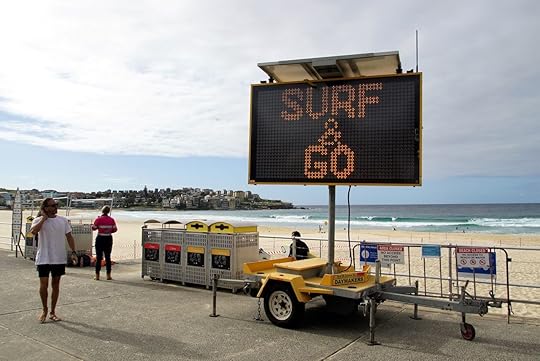
A glimmer of hope amid the global COVID-19 pandemic comes from Australia, which announced today that it will ease the lockdown measures that have been in place over the last month. As infection rates are reportedly down to 1 percent compared to 25 percent four weeks ago, Health Minister Greg Hunt told Reuters, “We are winning but we have not won yet.”
The Australian government has recorded over 13,000 cases of the virus to date, with approximately half concentrated in New South Wales, the country’s most densely populated region. It was projected that around 10 percent of Australia’s population would become unemployed if the lockdown remained in place until the end of June. The government’s decision to ease the confinement measures is part of a wider effort to help the economy recover.
The ease of restrictions is already underway as Bondi Beach and two nearby beaches are set to reopen today. It was further announced that beginning on Friday, NSW will allow up to two adults to visit another person’s home while continuing to observe strict social distancing guidelines. “For many people, they’ve been cooped up in their homes for a number of weeks, and with the exception of exercising, medical needs or buying what they need to or going to work, many people have been isolated in their homes,” Gladys Berejiklian, NSW’s premier and leader of the NSW Liberal Party, told local media.
The Australian government has currently tested around 1 percent of the population, although states set out to expand testing to all citizens as soon as possible. Australia’s precise mandate regarding testing has not been announced yet, though the country’s Chief Medical Officer Brendan Murphy mentioned a possible scaling up by using the help of private laboratories in addition to the public labs that have been responsible for testing so far.
As the lockdown begins to ease, the authorities are encouraging citizens to download the “contact tracing” smartphone app in order to stay up to date with the spread of the disease. To date, 10 percent of Australia’s population has downloaded the app called CovidSafe. Regarding privacy concerns related to the tracing, Minister for Government Services Stuart Robert told The Guardian, “There is no geolocation, there is no surveillance, there is no tracking,” emphasizing that the app will be used by health officials for the sole purpose of identifying the areas that are most likely to be infected.
It is hoped that a combination of widely available testing and effective contact tracing could provide the support that is needed to overcome COVID-19 in Australia. 

More like this: NYC will convert over 40 miles of streets into pedestrian zones next month
The post Australia is easing its lockdown by opening beaches and allowing home visits appeared first on Matador Network.
Sea angel photos and video

A sea angel might sound like one of the mysterious creatures that live in Hogwarts’ Great Lake, but it’s actually a sea slug that lives in the cold waters of the Arctic, subarctic Atlantic, and Pacific oceans.
While diving under the ice in the White Sea, in Russia’s Arctic, marine biologist and photographer Alexander Semenov captured amazing footage and images of sea angels.

Photo: Alexander Semenov/Aquatilis/YouTube
The tiny sea slug is every bit as beautiful as its name suggests. It resembles the image we have of an angel, with a white, translucent body and wing-like appendages. It is also very graceful as it free-floats.
Semenov, who is the head of the divers’ team at Moscow State University’s White Sea Biological Station, specializes in scientific macrophotography in natural environments. According to his Flickr profile, “This practice makes it possible to observe animals that cannot be properly studied under laboratory conditions, such as soft bodied planktonic organisms or stationary lifeforms living on the seafloor. My personal goal is to study underwater life through camera lenses and to boost people’s interest in marine biology.”
Semenov is no stranger to photographing the unique residents of the deep sea. He and his team have created a science project called Aquatilis, which is dedicated to studying and photographing the ocean’s most unusual creatures. 

More like this: Rare footage shows a humpback whale nursing her calf in Hawaii
The post Marine biologist captures extraordinary footage of sea angels under the ice in Russia appeared first on Matador Network.
POC travel movies
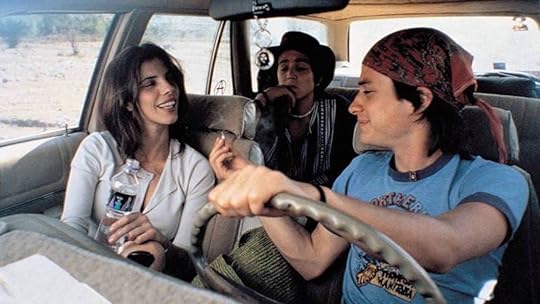
People of color are frequently underrepresented in most arenas of the media, and travel movies, in particular, seem to be overwhelmingly white. It makes some sense that at the confluence of two industries that tend to marginalize black and brown people — film and travel — that this would occur, but it doesn’t make it any more palatable to accept.
While they might be relatively rare, that doesn’t mean that travel movies starring people of color don’t exist. They certainly do. And interestingly, the storylines in these films can stray drastically from those you may be used to; they often portray much more risk, are more fraught, and often contain an element where choice is removed, adding to the sense of adventure.
While not an extensive list, here are 10 travel movies starring people of color that span a wide range of topics and genres. You should be able to find at least one or two on it to inspire your future travels.
1. The Motorcycle Diaries
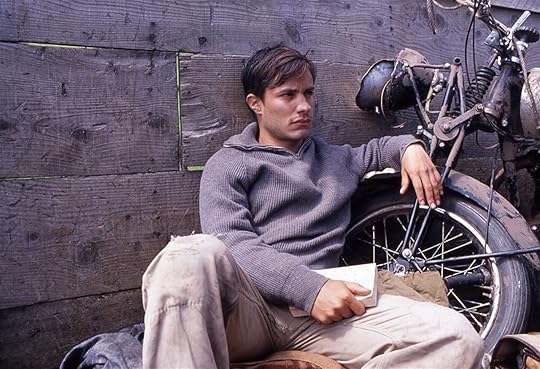
Photo: Film4 Productions
Based on the diaries of Ernesto Guevara, The Motorcycle Diaries tells the story of his trip through South America as a young medical student. Along with his friend and vagabundo científico (scientific vagabond) Alberto Granado, we follow Guevara from Buenos Aires to Caracas. If you’ve ever been a young, broke backpacker, you’ll easily fall in love with his shoestring budgeted journey that frequently involves walking down a highway. The viewer can watch as he becomes more worldly, empathetic, and radicalized by his travels, transforming from the simple Fuser into someone ready to become the guerrilla revolutionary who sought to bring equity to Latin America: Ché. If you’re not yet convinced of the transformative power of travel, this will be the movie to prove it to you.
2. Away We Go

Photo: Big Beach Films
If you’ve ever wondered how to go about finding the perfect city to move to, let Away We Go be your inspiration. In this 2009 movie written by Dave Eggers and Vendela Vida, we meet Verona De Tessant, six months pregnant and unsure of where she and her partner Burt should raise their child. Rather than pick a city from a map, they embark on a trip crisscrossing North America, seeking a place that feels like home. Those who are bi-racial or bi-cultural may find particularly poignant touchstones in this film, as in it we watch the (we assume) Creole De Tessant navigate white culture all over the continent, even within the confines of her own relationship.
3. Girls Trip

Photo: Will Packer Productions
This ensemble comedy was one of the most popular and successful movies of 2017 and helped catapult Tiffany Haddish’s career. Written by Tracey Oliver and Kenya Barris, Girls Trip follows four best friends to New Orleans where they attend the iconic Essence Festival. If you’ve ever struggled with rekindling a friendship after a long absence — or even if you’ve just always wanted to go to Essence Festival — you’ll find a lot to relate to in this film. Much like Sex and the City and Girls before it, viewers may be compelled to pick which one of the main characters they “are”: the coiffed and responsible Ryan, the struggling creative Sasha, the clipped and prudish Lisa, or the impulsive and tactless Dina.
4. Crazy Rich Asians

Photo: SK Global Entertainment
This 2018 rom-com chronicles Chinese-American Rachel Chu’s journey to Singapore to meet her boyfriend’s family and attend a wedding. A classic take on a fish out of water story, the bulk of the plot surrounds Rachel’s tendencies butting against tradition. Her ways are frequently pointed out to be too selfish, American, or poor — even by her friends — and over the course of the movie, we see her grappling with figuring out who she truly wants to be, and what she’s willing to sacrifice to get it. Anyone in a position where they must routinely cross classes or cultures within their lives will find a lot of truth within this light-hearted film.
5. Queen & Slim

Photo: 3BLACKDOT
While drawing upon the storied history of police brutality in the United States and mixing it with a little bit of Bonnie and Clyde, Queen & Slim became an instant black American classic when it premiered in late 2019. The story follows the eponymous couple as they flee across the US in an attempt to escape capture for the murder of a police officer they killed in self-defense. The viewer is taken on their journey through the country as well as through a myriad of American values. Throughout the movie we meet radicals who are both for and against their plight, but by the end, it seems much easier to discern between right and wrong.
6. Y Tu Mamá También

Photo: IFC Films
In some ways the quintessential road trip movie, Y Tu Mamá También follows the travels of Julio and Tenoch played by the famed — and here, baby-faced — duo of Diego Luna and Gael García Bernal. What begins as a simple trip to the beach unfolds into a study of early adulthood and sexuality, framed within the dreamy, cinematic backdrop of Alfonso Cuarón’s design. What is possibly the piece that launched the careers of both of these young actors, it premiered as the highest-grossing film in Mexico’s history and was nominated for an Academy Award for Best Original Screenplay.
7. The Road Within
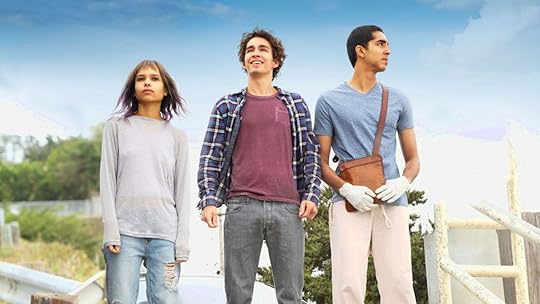
Photo: Well Go USA Entertainment
When three teenagers living in an in-patient facility decide that they’re deserving of some of the normal trappings of adolescence, they steal a car and drive to the ocean against the wishes of their parents and therapists. This film is a remake of the 2010 German film Vincent Wants to Sea, and as the American title suggests, it is as much about the inner journey of the protagonists as it is about their external one to Santa Cruz. Zoë Kravitz, who plays anorexia patient Marie in the film, reportedly reduced herself to 90 lbs for the role, noting that her own troubled past with an eating disorder informed her interest in the movie.
8. The Farewell
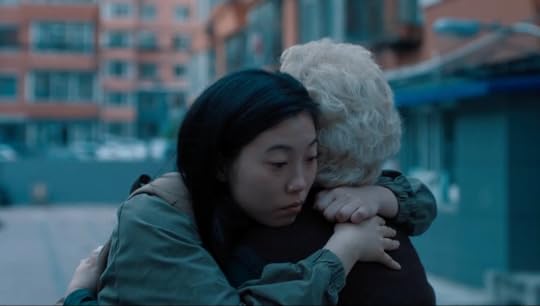
Photo: Big Beach Films
Released with the tagline “based on an actual lie,” The Farewell is the movie version of the story that screenwriter and director Lulu Wang first told in an episode of This American Life. Starring Awkwafina as a fictionalized version of Wang, we follow her all the way from New York City to Changchun, China. There we meet her slight and lovable grandmother we know as Nai Nai, who has terminal cancer but is the only family member unaware of her diagnosis. In this film, we discover the similarities between cultures and generations, all led by incredible performances from the principal actors involved.
9. How Stella Got Her Groove Back
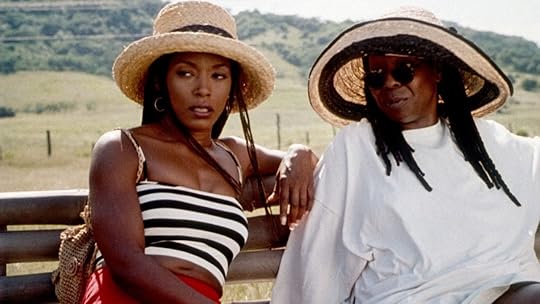
Photo: 20th Century Studios
Both a classic black rom-com and maybe the preeminent black travel movie, How Stella Got Her Groove Back stars luminary black actors Angela Bassett, Regina King, Whoopi Goldberg, and, incidentally, marks Taye Diggs’ film debut. In it, we see the eponymous Stella Paine, Bay Area lawyer and single mom, travel to Jamaica on vacation at the prodding of her best friend. There she meets Winston, a young local, who both reminds her of who she is and forces her to take stock of what she really wants. Though it actually tackles some serious issues that black American women still face today, it’s also a light and airy beach-romp, perfect when you’re trying to avoid a tenuous time.
10. Shirkers

Photo: Netflix
Amazingly, Shirkers is actually a travel documentary that tells the years-long and multinational tale of the making of a travel movie. The project of Singapore-born filmmaker Sandi Tan, Shirkers recaps the 1992 production of an independent movie of the same name, made by Tan and a small group of friends in 1992. An ambitious project for a group of people so young, it was largely spearheaded by a much older benefactor and mentor whose intentions are left to the viewer to decide. Premiering in 2018 at Sundance, Shirkers the documentary brings many of the original people involved in the making of Shirkers the movie back together, and most surprising is perhaps how a 35-year-old road trip movie that was never completed still holds so much weight and mystique within this group of now-grown adults. 

More like this: 10 films that show the beauty of Europe
The post 10 fantastic travel movies starring people of color to help you explore the world from afar appeared first on Matador Network.
April 27, 2020
Pentagon videos of UFOs

Most accounts of UFO sightings and photos should be taken with a grain of salt, but when the footage comes from the Pentagon, it carries a little more credibility.
The Department of Defense has just released three declassified videos that show navy pilots interacting with “unidentified aerial phenomena”. The first of the three events captured on video took place in November 2004, with the other two in January 2015.
The footage was leaked to the public years ago, but according to a release by the Department of Defense, the videos are now officially available “in order to clear up any misconceptions by the public on whether or not the footage that has been circulating was real, or whether or not there is more to the videos.”
A New York Times story from 2017 included interviews with the pilots featured in the first video, in which they described seeing an object about 40 feet long hovering 50 feet above the water. Upon their approach, the object rapidly rose into the air and disappeared from sight. In a second New York Times story, published in 2019 about the two incidents from 2015, pilots claimed to have seen similar objects during their flights.
The Pentagon has not, however, determined what these objects actually are.
Instead, it issued a statement saying, “The aerial phenomena observed in the videos remain characterized as ‘unidentified.’” 

More like this: NASA releases 50-year timelapse of the earth and moon for Earth Day
The post The Pentagon has released videos of UFO encounters, and they are spooky appeared first on Matador Network.
Sustainable cannabis brands
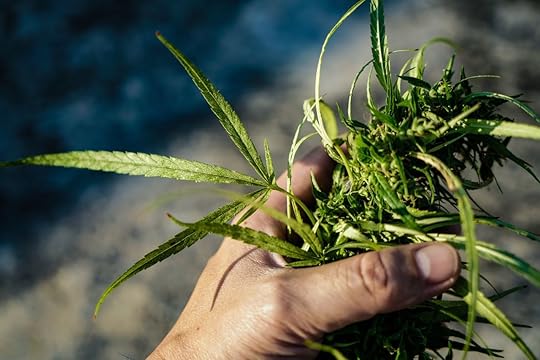
In the cannabis space, sustainability is an exercise in paradoxes.
Despite a general ethos of respecting the environment among growers, cannabis is a taxing crop due to the plant’s high demand for resources like water and electricity. The industry is coming of age at a time when environmental scrutiny is playing an unprecedented role in consumerism, making it subject to the demands of an increasingly eco-conscious public. That public, however, is largely undereducated in sustainable practices.
Some activists worry that mass-produced cannabis can never be truly sustainable. Yet independent growers and brands are changing their business models so that it doesn’t compromise the environment. Granted current regulations are hindering that mission.
Take buzzwords like organic and biodegradable, characteristics that buyers have been conditioned to seek out. In truth, neither is accurately represented in the cannabis, or any other, industry.
Federal regulations prohibit cannabis from being labeled as organic, regardless of cultivation practices, because cannabis is illegal at the federal level. Biodegradable paraphernalia, on the other hand, misleads consumers by implying that it breaks down easily, and that that’s a good thing.
“Everyone wants biodegradable packaging,” says Ron Basak-Smith, the CEO and co-founder of Sana Packaging, whose approach to making cannabis more sustainable centers on addressing the single-use-plastics problem that’s only growing as the industry does. “There’s no certification for that,” he says. “It just means that something breaks down into something at some point in time,” which may likely mean sitting in a landfill releasing carbon and methane.
Scale is the biggest obstacle facing eco-friendly cannabis farms today. Where small-batch operations are able to grow high-quality cannabis in controlled environments using sustainable methods such as water reclamation systems and permaculture techniques, large-scale cultivators rely on harmful practices like monocropping to keep yields high and costs low.
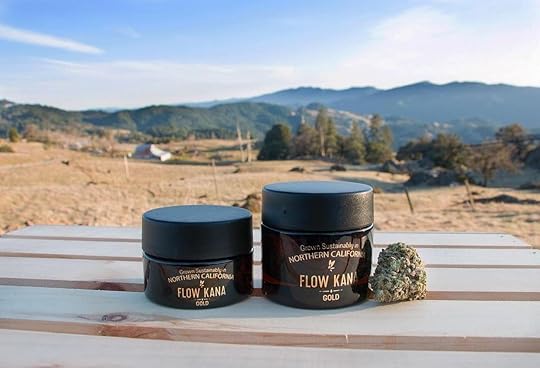
Photo: Flow Kana/Facebook
Flow Kana, a cannabis brand that partners with independent growers in Northern California’s Emerald Triangle, where the majority of the country’s cannabis is produced, believes that, with some support, craft cannabis farms can succeed, sustainably, at scale.
The company, which has raised close to $175 million in investments and is projected to be worth billions, follows a model similar to that of Uber and Airbnb, which have become giants in transportation and accommodation without owning any vehicles or hotel rooms.
Flow Kana opened an 80-acre campus in Mendocino County in 2018, establishing the world’s largest cannabis processing center. The business is a large-scale supply chain for craft growers, providing a space for post-harvest work like manufacturing and distribution.
Each farm in the Flow Kana network shares the company’s commitment to sustainability, though cultivation techniques vary: Clean Green-certified Angry Bunny Ranch promotes biodiversity. Catalyst Unlimited enriches its soil with homemade compost. Second-generation Huckleberry Hill Farms uses rainwater to curb its environmental impact.
Only one factor is true across the board: Flow Kana exclusively enables sun-grown cannabis.
“From our perspective, indoor [cannabis] is just a relic of prohibition,” said CEO and co-founder Michael Steinmetz during a Flow Talks presentation this year, adding that the silver lining to California’s bygone cannabis prohibition is that it resulted in tens of thousands of off-grid operations that were forced to adapt to cultivation without access to traditional water or power sources.
Though many illegal operations historically resorted to ecologically damaging practices, such as growing cannabis on public land and pillaging watersheds, others developed sustainable processes, such as employing solar power and rain catchments. Most also grew other crops, establishing diversified, ecologically beneficial farms.
Though Steinmetz concedes that mom-and-pop marijuana cannot compete with Big Cannabis (MedMen) on its own, he believes that this “model where you’re empowering thousands of small farmers that tend to the land, that love the plant, that do it with intention…can actually bring craft and scale to the same equation.” And, so far, it’s working.
Sustainability in the cannabis space does not start and end with cultivation, however. By the time flowers and other cannabis products go to market, they introduce the issue of plastic use.
Enter companies like Sana Packaging. Basak-Smith was involved in the liquor industry when recreational cannabis started to take off in Colorado. Anticipating an onslaught of plastic packaging, he questioned whether cannabis would, or rather should, become the next industry built on the back of single-use plastics.
Together with James Eicher, Basak-Smith started Sana Packaging in 2016 to combat the planet-threatening problem. Their first step: Seek out sustainable and renewable materials.
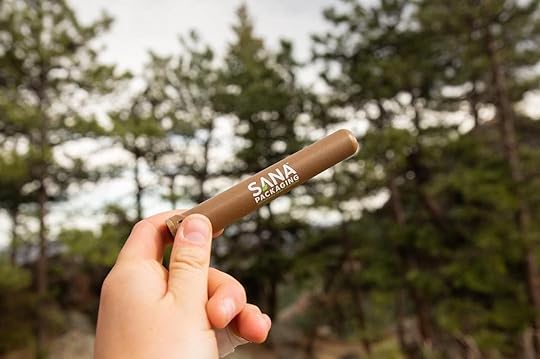
Photo: Sana Packaging/Facebook
Many of the company’s products are made from 100 percent plant-based hemp plastic, a biocomposite that compounds hemp, a relatively eco-friendly feedstock, with polylactic acid, or PLA, the corn-based polymer from which all bioplastics are made. The company also partners with Oceanworks to create products made from 100 percent reclaimed ocean plastics.
Nonetheless, Sana Packaging considers itself “material agnostic.” Investing heavily in specific materials when both the regulations and science surrounding sustainable cannabis packaging are rapidly changing only contributes to the problem of promoting sub-sustainable materials.
“Think of plant-based plastics similar to the way you think of the early computer,” says Basak-Smith, who acknowledges that PLA, whose supply is largely controlled by multinational corporations that use genetically modified crops, is not free from scrutiny. “They’re really expensive, and oftentimes, there’s an easier substitute to use. But as the technology curve improves, you start to see the price drop, you start to see efficiency come in, and the materials become better. That’s where we stand with plant-based materials right now.”
Because of its reticence to promote a single solution, Sana Packaging recognizes the importance of building a brand with values that consumers can identify with. This poses challenges of its own: A product’s packaging is traditionally not meant to interfere with the product itself. Moreover, flashy packages, made with bright ink and mixed materials, are rarely sustainable.
Sana Packaging’s ocean tubes, for example, are currently only available in white, as white and clear plastics have the most recycling potential. As such, the company is banking on name recognition to catch a shopper’s eye. This necessitates building a brand based on substance, not style, that consumers want to support because they support what the company stands for.
Yet convincing cannabis companies and dispensaries to use Sana Packaging, and shoppers to buy products thusly packaged, is still only half of the Sana Packaging mission.
“We’re really trying to get to the core of the issues,” says Basak-Smith, who identifies failings within the country’s current waste-management systems as the primary inhibitor of truly sustainable packaging. Though he acknowledges the consumer appeal of a product made with reclaimed ocean plastic, for example, “at the end of the day, we didn’t start this company to make single-use plastic widgets,” he says.
The next step is addressing the end-of-life cycle of cannabis packaging. Though state and federal regulations have created hurdles around recycling within closed systems, Sana Packaging is committed to carving out opportunities for consumers to put their used cannabis packaging back into circulation and, eventually, nature.
One option the company is exploring is establishing take-back programs that allow consumers to return their used packaging to local collection centers “because once it enters into the larger waste and recovery system…it’s not gonna get remanufactured,” says Basak-Smith.
He calls this top-down approach to proper manufacturing and disposal “producer responsibility.” It’s an environmental obligation that falls on companies, not consumers, despite the emphasis corporations and lobbies have placed on individuals to be more environmentally friendly over the past several decades. What good is it for the average American to recycle if those recycled goods are not then repurchased, he wonders, noting that allowing consumers to believe that they’re contributing to a sustainable system that is, in fact, deeply broken does more harm than anything.
What consumers can do is put their wallets where their intentions are. Supporting brands like Flow Kana and Sana Packaging sends a message to industry leaders and regulators alike that sustainability matters to cannabis users, even if it means paying a little extra for products.
As more states adopt legal cannabis, and the country stares down the barrel of a future in which federal legalization is increasingly likely, “everyone’s playing the game of who’s going to become the Pepsi Cola of cannabis,” says Basak-Smith. Let’s just hope sustainability in the cannabis space winds up miles ahead of the standard set by soda companies. 

More like this: Water, energy, and plastic packaging: inside the environmental impact of cannabis
The post How boutique cannabis companies are making the industry more environmentally friendly appeared first on Matador Network.
Swedish take on social distancing
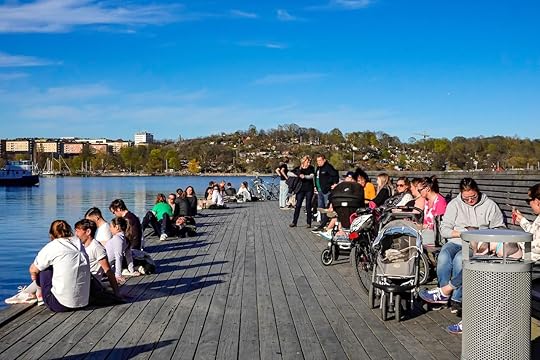
Since the start of the coronavirus crisis, Sweden surprised the world by taking a very different approach to the viral threat than its neighbors and, in fact, than most of the rest of the world.
Rather than forcing businesses like shops to close, the government has asked citizens to stay home where possible and to avoid visiting nursing homes. Gatherings of up to 50 people are permitted, bars and restaurants are in business, and public schools under the high-school level are open. That means every weekday kids up to 15-years-old are joining their classmates and learning from teachers, in person.
The Swedish approach was pioneered by the country’s chief epidemiologist Anders Tegnell, who said the country could withstand letting the virus move through the larger population while protecting its most vulnerable citizens.
While the approach seems to have broad acceptance inside the country, it also has its local critics. In an open letter to one of the country’s major newspapers two weeks ago, 22 researchers said the country’s approach was far too lenient.
Another Swedish newspaper ran a letter signed by 913 educators that asked the country’s ministries of education, health, and social policy to “better protect staff and students.” The teachers criticized authorities for refusing to compromise, despite confronting a pandemic unlike anything seen in the modern era. “School duty and schedule are still seen as… more important than life and health for those staying on school premises,” said the letter.
Despite the critiques, polls show most Swedes are in favor of the approach. “Support for the government has gone up,” said Lars Trägårdh, a historian and professor at Stockholm’s Ersta Sköndal Bräcke University, who co-authored a piece in The Guardian that opined that trust in government is a critical piece of the Swedish approach.
He likened the support to what is being seen in other countries where citizens are rallying around their nation’s approach, whatever it may be. “So there’s a lot of support here that is unrelated to any sort of objective medical facts,” he added.
Trägårdh, moreover, cautioned against overstating the degree of openness in Sweden. While images of outdoor bars in Stockholm filled with people may be what those of us outside of its closed borders are seeing, the reality is more nuanced.
“We are actively engaged in social distancing,” said Trägårdh, who has been teaching his classes via Zoom from an empty office space and whose wife is working from home. He is weary of efforts to portray the Swedish approach as completely different from that of its neighbors, referring to the “empty categories of lockdown versus lax.”
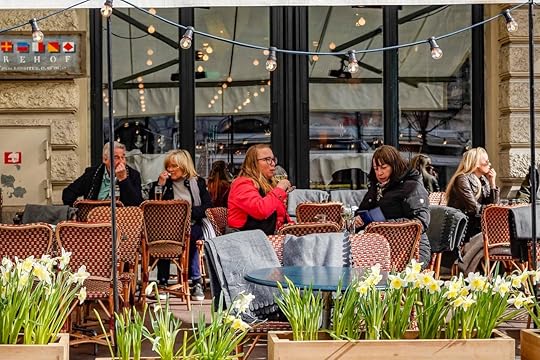
Stockholm, Sweden, March 31, 2020: Despite lockdowns in other countries, Swedes are going about their normal business though the streets are noticeably emptier than usual. Photo: Alexanderstock23/Shutterstock
Like the rest of the world, life is anything but normal in Sweden these days. Although restaurants and bars are open, they can be shut down if they don’t properly enforce strict social-distancing rules. And public buses and trains are carrying few passengers.
“Everybody is keeping a distance. We haven’t seen our friends since this started,” says Annemari Koivula, a physician and mother in Stockholm. Her husband and two older boys have been living outside the city in the family’s rustic weekend cottage, working and attending school online. As a physician going into her clinic, Koivula has stayed in Stockholm with their youngest son, who has been attending school.
Koivula said she also appreciates that those forming the policies are physicians and not politicians. “It’s a lot of doctors who are on the front line and providing their guidance,” she said.
Trägårdh and Koivula are glad they can send their children to school, but they recognize their attitude isn’t necessarily held outside of Sweden. Koivula and her husband would like to visit their families in their native Finland next summer, but Koivula wonders whether or not Finland, which has much stricter social-distancing measures, will allow it. “We’re not very popular,” she muses about others’ current view of Sweden.
Even within Sweden, dissatisfaction with the country’s approach is more apparent among non-Swedes. “Particularly in the expat community, you have people who are more critical than regular Swedes,” said Trägårdh. “There’s a fair amount who are upset, who think that Sweden should be closing its schools and following a more strict policy.”
A lot of the concern is due to Sweden’s comparatively high infection rate. On Friday, the Public Health Agency acknowledged a rise in cases after recent suggestions that they would soon plateau. Sweden, a country of 10 million, has seen 2,274 deaths from coronavirus. Its neighbors Finland and Norway, whose populations measure 5.5 and 5.4 million, have seen 190 and 201 deaths from the virus, respectively — meaning Sweden has experienced five times the number of deaths per capita.
Matador reached out to Sweden’s Public Health Agency for comment but was directed to an interview with Tegnell published in last week’s Nature. There, Tegnell, the epidemiologist who’s been leading the country’s approach, said, “As a society, we are more into nudging: continuously reminding people to use measures, improving measures where we see day by day that they need to be adjusted. We do not need to close down everything completely because it would be counterproductive.”
The latest nudging came on Wednesday when the country’s prime minister explicitly reminded healthy people to maintain a social distance — but did not specify what that distance should be. A look at the guidelines for bars asked patrons to maintain an “arms length” separation between them.
In the Nature interview, Tegnell acknowledged that the country had not done well by its seniors. The virus has torn through nursing homes, and to date, 87 percent of Sweden’s COVID-related deaths have been in people aged 70 and older. “We underestimated the issues at care homes, and how the measures would be applied. We should have controlled this more thoroughly,” Tegnell said.
Trägårdh also believes Sweden could have done more for its oldest residents. “We’re not respecting or taking care of the elderly the way we have kids,” said Trägårdh.
But he feels the approach has been especially good for children. “Me and my wife are thankful every day” that their two 12-year-old boys are attending classes, he said.
Koivula feels the same way, noting that “Kids need socialization. They need to be active.” In a Nordic culture where spending time outside is considered essential for children, it’s no surprise they have this view.
And it appears to be part of what informed the government’s decision to keep schools open. “In Sweden, children’s rights are very big. You think about what is the cost inflicted on kids that are deprived of school,” noted Trägårdh
Yet nearby countries with similar views towards equality and spending time outside, like Finland, have nonetheless opted for much stricter controls — putting death counts ahead of considerations like the need to attend school, mental health, and long-term sustainability.
“If your primary concern is death count,” particularly if a vaccine is found sooner than anticipated, Trägårdh said it would be fair to call Sweden’s approach “terrible.” But in the absence of a vaccine in the near term, he says “you can’t keep people in lockdown forever.”
Trägårdh feels that a lot of the attention on Sweden may be because its approach “appears a little bit as a challenge or like a threat to other countries,” he said. It could be seen as others asking, “‘If we all have to suffer being locked up here, why should the Swedes be able to go out and sit in outdoor cafes?’”
Trägårdh concedes that Sweden can sometimes appear “smug” but said, “Every country has to find its one way. Every country is conducting an experiment.” As to closing schools, he echoed the Public Health Authority when he said it was too late for that anyway: “That train has left the station.”
“I think everybody should just calm down a little bit and do what they want to do in their countries and not worry so much about what Sweden is doing in Sweden. We aren’t exporting this model to anybody else,” he said.
And he puts his own perspective on the issue: “In daily life, everyone here is as sick and tired as everyone else, and everybody is sad about old people being sick and people dying and the general destruction of social life. Nobody likes that, and I think many people here are quite happy about the freedoms we do have remaining.” 

More like this: Princess Sofia of Sweden will assist medical workers during the pandemic
The post With bars open and kids in school, Sweden stands alone in its COVID-19 approach appeared first on Matador Network.
One-person Swedish restaurant
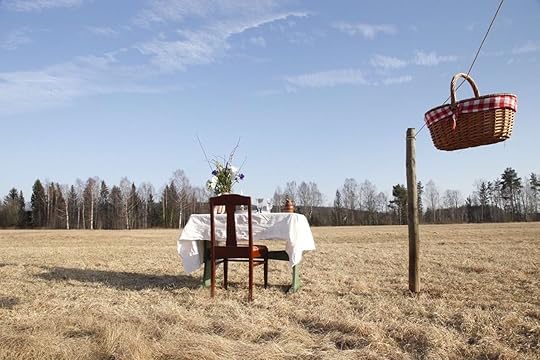
Questions have been raised surrounding the ability of restaurants to open while also maintaining safe social-distancing measures. This innovative Swedish restaurant is taking social-distance dining to a whole new level by opening up a one-person restaurant. Bord för en, meaning “table for one,” is a restaurant for the COVID-19 era pioneered by Rasmus Persson and Linda Karlsson.
The unusual restaurant will only have one table, located in a meadow 50 yards away from their house. Only one guest will be accepted per day, and the food will be cooked in the house by Persson (a trained chef) and delivered via a rope-operated basket from the kitchen window.
The menu will feature three courses, including a range of local dishes like råraka (Swedish-style hash brown, smetana, seaweed caviar, wood-plucked sorrel), the Black & Yellow (yellow carrot-ginger purée, browned hazelnut butter, sweet corn croquettes, serpent root ash), and the Last Days of Summer (ginned blueberries, iced buttermilk, and viola sugar from the couple’s own beets). Since the couple relies on local and seasonal ingredients, the menu is expected to change on a regular basis.
One of the most unique aspects of this dining experience is that there will be no fixed price for menu items. Payment will be voluntary and determined by each individual guest.
This meadow-based restaurant isn’t as remote as it may sound. It’s located right near the Hembygsgården bus stop, and from there it’s just a short walk to the meadow.
The restaurant will open on May 10 and remain open until August 1. Reservations can be made online. 

More like this: Miami restaurant attempts ‘socially distant’ dates, but cops shut it down
The post A social-distancing restaurant is coming to a Swedish meadow, and it only seats one person per day appeared first on Matador Network.
Yellow filter in American movies

On April 19, Netflix shared a new trailer for its recently released Chris Hemsworth film Extraction, which takes place in Bangladesh. The trailer depicts the high-octane methods used to film the movie (a cameraman attached to the front of a car moving at high speed, for instance). But the trailer had an unexpected consequence: Viewers quickly noticed that the footage of the movie being filmed looked normal while the final cut of the film has a distinct, and off-putting, yellowish tint.
There’s a phrase for this distinct color palette: It’s called yellow filter, and it’s almost always used in movies that take place in India, Mexico, or Southeast Asia. Oversaturated yellow tones are supposed to depict warm, tropical, dry climates. But it makes the landscape in question look jaundiced and unhealthy, adding an almost dirty or grimy sheen to the scene. Yellow filter seems to intentionally make places the West has deemed dangerous or even primitive uglier than is necessary or even appropriate, especially when all these countries are filled with natural wonders that don’t make it to our screens quite as often as depictions of violence and poverty.
“It’s upsetting. It goes hand in hand with how racist Westerners perceive these places and people, especially when you think about how vibrant and colorful these countries’ cultures actually are. Applying these filters plays into stereotypes about these places and the people who live there,” Sulymon, a business analyst from California, whose family is from India, Pakistan, and Afghanistan, tells me.
Extraction is hardly the first movie to employ such an unfortunate color palette: Darjeeling Limited used it in scenes depicting small villages in India. The tone of Traffic, a 2000 movie directed by Steven Soderbergh that focused on the drug trade in Mexico, turns undeniably yellow during an execution scene in the desert (shots of Michael Douglas, who plays a judge from Ohio, are cast in blue tones). Nearly a decade ago, Reddit users pointed out that viewers could spot a Breaking Bad scene in Mexico because the screen turned the color of straw.
American films tend to add the yellow filter when they depict countries stereotyped as impoverished, polluted, or war zones (or all three). Twitter commenters on the Netflix trailer for Extraction expressed a range of emotions over the film’s use of yellow filter, from confusion to condemnation. One user joked that its also called the “Mexican filter” while another quipped “the lower a country’s GDP the more mustard coloured it is.”

Photo: Netflix/Youtube
Others pointed out that, by contrast, movies set in the West usually get green or blue tones, like in this scene from the movie Twilight, or this one from The Bourne Identity. Notably, both actors here are white while, Chris Hemsworth-type characters aside, the Indian and Mexican actors in films like Extraction and Traffic are, of course, brown. One telling comment on the Extraction trailer read, “I don’t know how but this screams racism.”
Lest you think the countries these films are depicting are just smoggy in real life, look to Netflix’s own video on Twitter, showing the behind-the-scenes filming process of an action scene next to the on-screen version. At certain points of the unfiltered clip, the sky is actually blue.
Matador Network's Blog
- Matador Network's profile
- 6 followers



